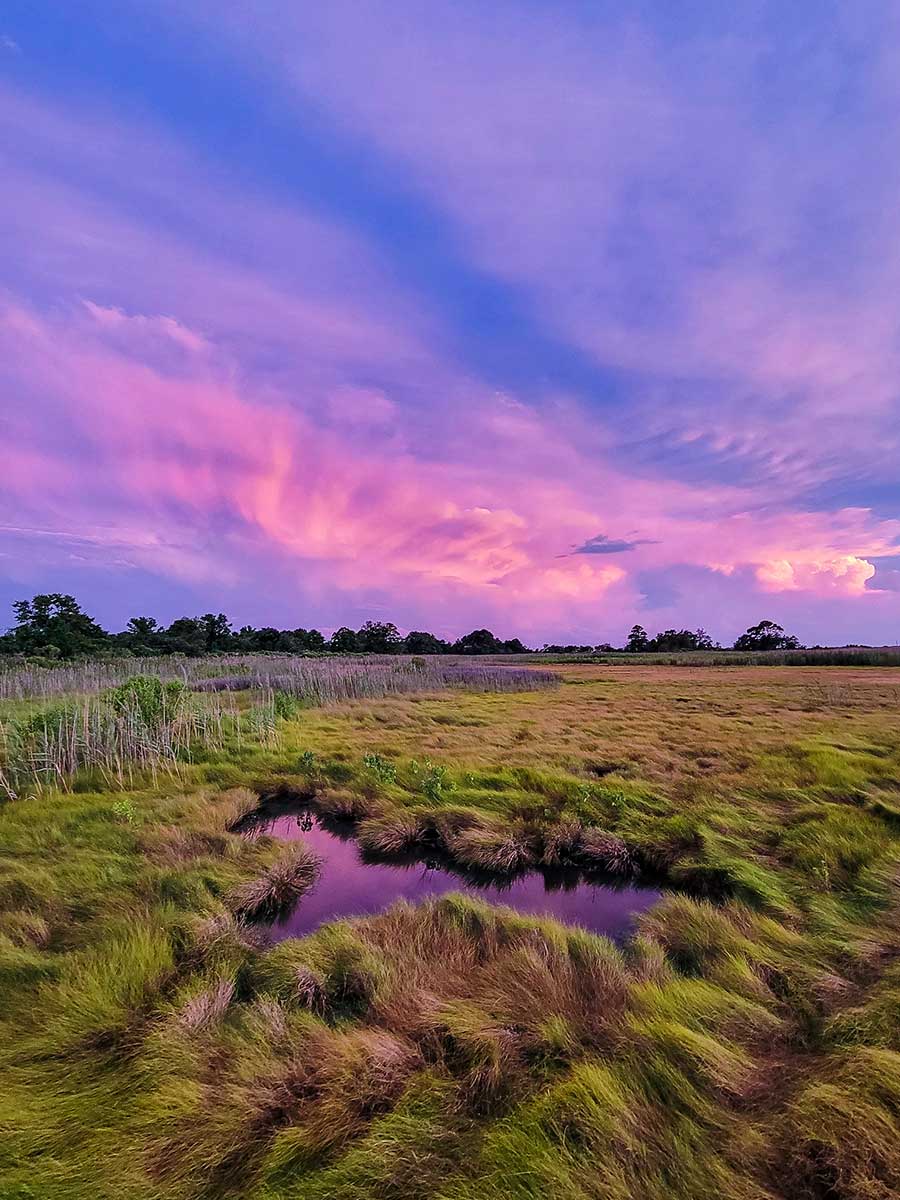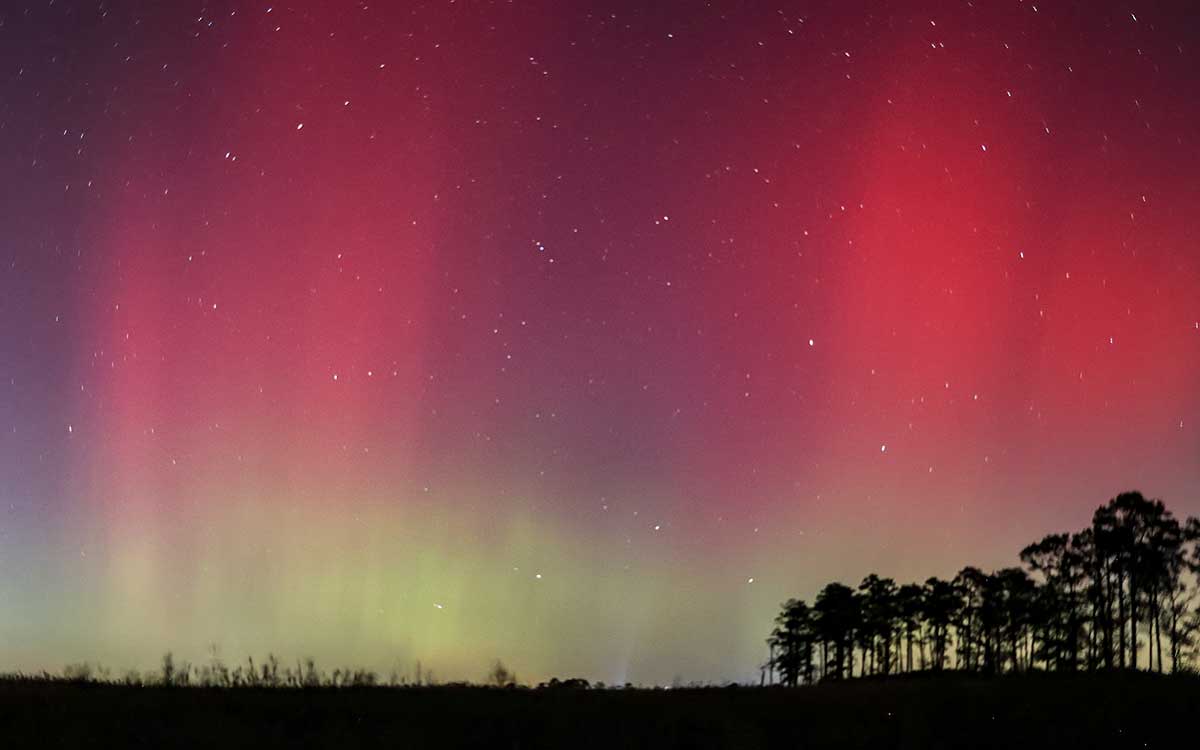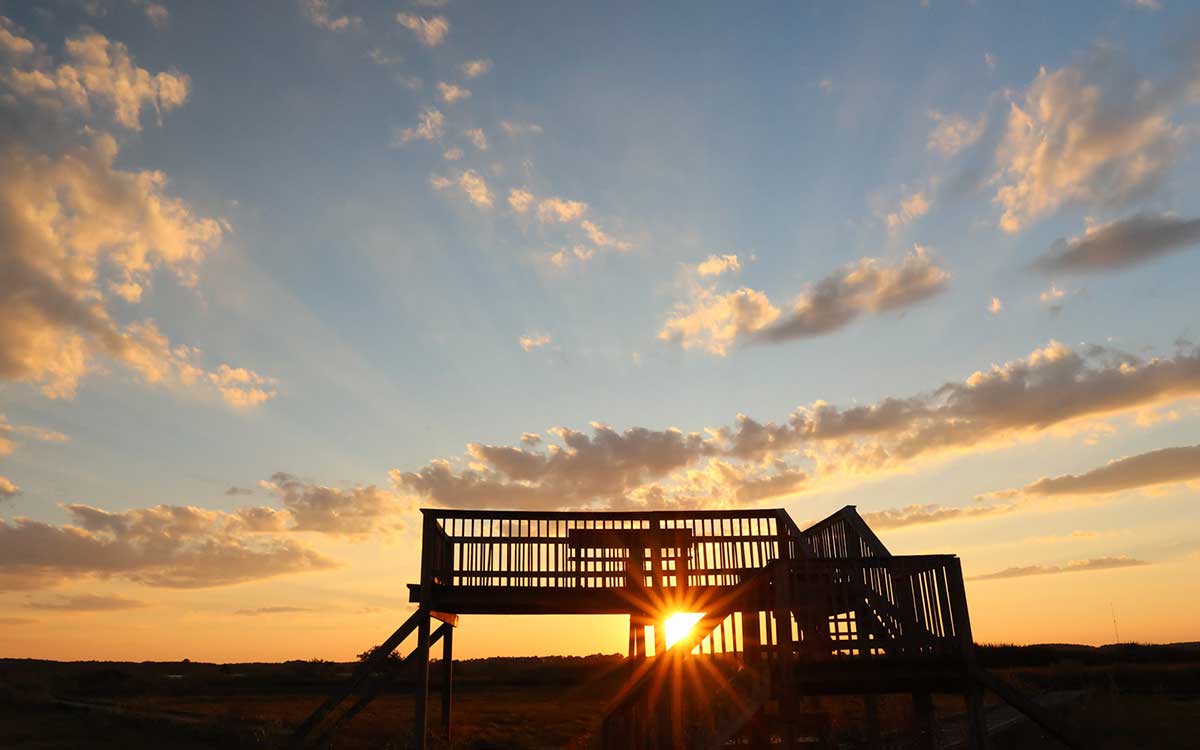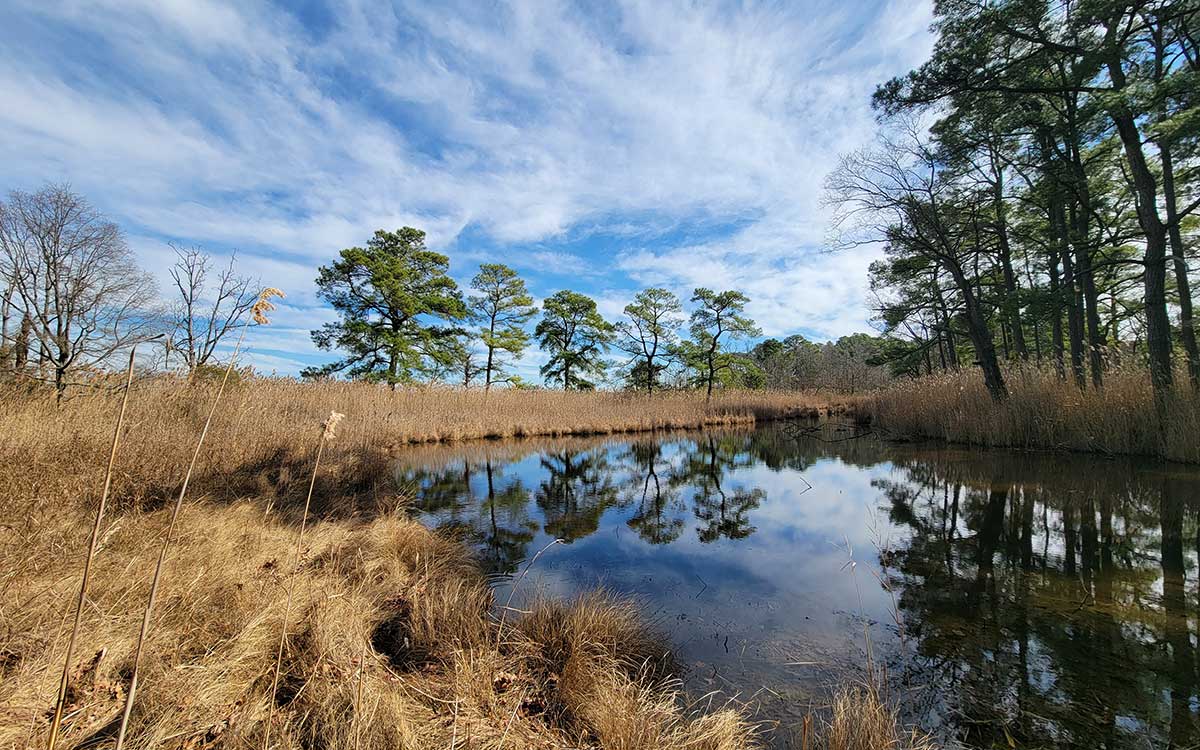How Climate Change is Reshaping Maryland: Rising Seas, Extreme Weather, and Growing Risks
Climate change refers to long-term changes in temperature, weather patterns and other atmospheric conditions on Earth, primarily driven by human activities such as burning fossil fuels, deforestation and industrial processes. This leads to a build-up of gases like carbon dioxide in Earth’s atmosphere, which act like a heat-trapping blanket and cause global temperatures to rise. Some of the key effects of climate change include more frequent extreme weather events, rising sea levels, shifts in ecosystems and disruptions to agriculture and water resources.
Ways Climate Change Affects Maryland
- 1
Rising Sea Levels: Maryland’s coastline, especially around the Chesapeake Bay, is highly vulnerable to rising sea levels. Due to both global sea level rise and local factors like land subsidence (sinking land), the state is seeing an accelerated rate of sea level rise. This leads to more frequent coastal flooding, erosion, and saltwater intrusion into freshwater systems.
- 2
More Intense Storms and Flooding: Maryland has experienced an increase in the frequency and severity of extreme weather events, such as hurricanes, heavy rainfall, and coastal storms. This contributes to more frequent flooding, including tidal (nuisance) flooding that disrupts daily life, damages infrastructure, and overwhelms stormwater systems.
- 3
Shifting Ecosystems and Habitat Loss: Warmer temperatures and changing precipitation patterns affect ecosystems, especially in places like the Chesapeake Bay. Increased temperatures and altered rainfall can harm plant and animal species that rely on specific climate conditions, leading to habitat loss, especially for coastal and wetland species.
- 4
Impact on Agriculture: Maryland’s agriculture, especially its crops and livestock, is also being affected by climate change. More frequent heatwaves, unpredictable rainfall, salt-water intrusion on coastal farms, and changing growing seasons can stress crops and reduce yields, affecting local food production.
- 5
Health Risks: Climate change can also lead to increased health risks, including heat-related illnesses, the spread of diseases, and more frequent air quality issues. Warmer temperatures can exacerbate conditions like asthma and other respiratory problems.

Rising seas and retreating shorelines – Flooding
Did you know that the Chesapeake Bay—the nation’s largest estuary and crucial both ecologically and economically—faces significant challenges from rising sea levels and intensifying coastal flooding? The Chesapeake Bay area is the third most vulnerable U.S. region to sea level rise (SLR), after Louisiana and South Florida. Since 1900, global sea levels have risen by 7–8 inches and are projected to rise 1–8 feet by 2100, with a likely range of 1–4 feet due to human activity.
Impacts include more frequent coastal flooding, erosion, wetland loss and saltwater intrusion into groundwater. Sea levels in the Bay have been rising at a rate 50% faster than the global average. Additionally, land subsidence in the region, due to groundwater withdrawal and natural geological processes, worsens SLR effects. A Maryland-specific study predicts SLR between 0.8 to 1.6 feet by 2050, with a potential 2.0 to 4.2 feet rise by 2100 if emissions continue. The increase in sea level has led to more frequent nuisance floods, damaging infrastructure and causing road closures, with the highest number of tidal flood days occurring in 2018.
About 72% of Marylanders live in coastal communities like Baltimore and Annapolis. This makes residents particularly vulnerable to annual flooding. Resilient communities must be able to adapt to more frequent flood disruptions. Shore communities, state and local governments, nonprofits and the private sector are actively addressing this.
The Chesapeake Bay Environmental Center is on the frontlines (literally) of the flooding impacts, and is the perfect location to pilot, study and demonstrate adaptation solutions to reduce flood risks. As a living laboratory for adaption strategies, CBEC can ultimately help to protect Maryland residents from coastal flooding.
How is CBEC supporting this research?
In August 2006, CBEC partnered with the National Oceanic and Atmospheric Administration (NOAA) to install a geodetic control marker as part of the National Spatial Reference System, a collaboration aimed at monitoring coastal change. This marker, along with 14 vertical control points and 5 Surface Elevation Tables (SET) sites established by NOAA in 2009, is used to measure shifts in marsh elevations, providing critical data for understanding the impacts of sea level rise, marsh subsidence and climate change. The data gathered through these geodetic tools supports the creation of digital elevation models and elevation maps, which help guide restoration and management strategies for coastal habitats. By leveraging these tools, CBEC not only contributes to scientific research but also serves as a model for using vertical control in coastal wetland research and management.
The installation of the SET’s and geodetic markers were the first steps to understanding the changes that we were beginning to see in the marshland along the main roadway into CBEC.
CBEC also partners with the Maryland Department of Natural Resources on the following projects aimed at building resilience in coastal areas through adaptation practices like shoreline restoration (living shorelines), Thin Layer Placement (beneficial reuse of dredge material), and monitoring of these practices (Restoration through Resilience) to evaluate which are most effective.
Restoration through Resilience
The Initiative aims to complete at least 15 priority restoration projects across Maryland over five years, using nature-based solutions to strengthen community resilience to climate change. These projects include shoreline restoration, marsh and dune restoration, green infrastructure and other practices that benefit both ecosystems and communities. Projects are chosen based on factors like community exposure, engagement, cost efficiency, ecological impact and potential for broader social benefits.
CBEC Thin-Layer Placement Project
Funded by the Resiliency through Restoration (RtR) and Waterway Improvement Fund (WIF) programs, this project will use 8,494 cubic yards of dredged material to restore 4 acres of tidal marsh at CBEC. The restoration will raise marsh elevation to counter sea level rise and erosion, protecting the 510-acre campus and nearby communities. It highlights how dredged material can aid resilience and ecosystem restoration in the Chesapeake Bay area.
How can you support this work while at CBEC?
Community-driven collaborative science is for anyone with the right app on their phone! Download the Maryland MyCoast App to take pictures of the restoration sites. MyCoast App
Maryland allows you to communicate flooding and storm damage in your community. It is a portal to collect and analyze photos which are linked to precipitation, riverine, and tidal data to create reports that help government agencies, business owners, and residents understand impacts in your community and encourage action to reduce localized flooding. Thank you for submitting photos!
Ghost Forests – Salt Water Intrusion
A ghost forest is a term used to describe a forested area where trees, particularly along coastal regions, have died due to environmental changes—most often from saltwater intrusion, rising sea levels and flooding. In coastal communities, ghost forests are usually the result of saltwater flooding that inundates freshwater ecosystems, killing trees that aren’t adapted to saltwater. Over time, the dead trees are left standing, creating a “ghostly” appearance in what was once a thriving forest.
Here’s how it happens:
- Saltwater Intrusion: As sea levels rise or as storm surges push saltwater inland, coastal forests, like swamps, wetlands, and marshes, can be flooded with salty water. Many tree species (such as cypress, pine, or oak) are not tolerant of saltwater, so when they are exposed to it, they begin to die.
- Rising Sea Levels: As the sea encroaches on the land, the natural transition between freshwater and saltwater ecosystems is shifting inland. Some areas that were once freshwater forests are now becoming brackish or saltwater zones, killing the trees that are not suited to these conditions.
- Erosion: Coastal erosion can also contribute to the death of trees in these areas, further exposing roots to saltwater and disrupting the forest ecosystem.
The result is a “ghost forest”—standing dead trees in what used to be a healthy forest. These areas are often visible and striking, and they serve as a visible reminder of the impacts of climate change on coastal ecosystems. Ghost forests are becoming more common as climate change accelerates, and they can affect biodiversity, wildlife habitats, and the local ecosystem balance.
Ticks and Mosquitoes — Human Health Considerations
As climate change continues to alter temperature and weather patterns, the risk of diseases transmitted by ticks and mosquitoes is increasing in Maryland. Warmer temperatures, longer growing seasons, and changes in precipitation all create more favorable conditions for these pests and the diseases they carry. Here’s how climate change is making ticks and mosquitoes a greater risk to human health in Maryland:
Expanded Habitats and Increased Activity
- Ticks: Maryland’s changing climate, especially warmer winters and milder temperatures, has allowed tick populations to thrive and expand into new areas. Ticks, particularly deer ticks (which carry Lyme disease), have become more widespread. The longer growing seasons also mean that ticks are active for longer periods, increasing the chance of human exposure.
- Mosquitoes: Warmer temperatures also support mosquito populations, as these insects are highly sensitive to climate conditions. Warmer springs and longer summers mean mosquitoes are active for a greater portion of the year. Additionally, more frequent rainfall and changing weather patterns can create more standing water, which provides ideal breeding grounds for mosquitoes.
Increased Disease Transmission
- Lyme Disease: With more ticks present in previously uninhabited areas and for a longer duration throughout the year, the risk of Lyme disease transmission is higher. Ticks are vectors for Lyme disease, which can cause chronic health problems if untreated.
- Other Tick-borne Diseases: In addition to Lyme disease, ticks in Maryland are also responsible for the spread of diseases like anaplasmosis, babesiosis, and Powassan virus. These diseases are becoming more common as tick populations expand and overlap with human activity.
- Mosquito-borne Diseases: Warmer temperatures and increased rainfall promote the spread of mosquitoes that carry diseases like West Nile virus, Zika virus, and Eastern Equine Encephalitis (EEE). As mosquito populations grow and spread into new areas, the risk of outbreaks of these diseases increases. Maryland has already seen periodic increases in mosquito-borne illnesses, particularly during wet years.
Longer Transmission Seasons
- Climate change not only lengthens the active season for ticks and mosquitoes but also makes it more likely that these pests will carry and transmit diseases over a longer period. In Maryland, earlier springs and later falls mean that people are at risk of tick and mosquito bites for more months each year, which increases the overall exposure time to disease vectors.
Climate change is creating a healthier environment for ticks and mosquitoes (and an UNhealthier one for humans and pets), extending their active seasons and expanding their ranges. In Maryland, this means a greater risk of diseases like Lyme disease, West Nile virus and others. These changes highlight the need for increased vigilance, prevention strategies and public health awareness to mitigate the risks of tick- and mosquito-borne illnesses as climate change continues to evolve.
How Can You Help?
Prepare to enjoy your time in nature! Protecting yourself from mosquitoes and ticks is important. Here are some effective strategies to reduce your risk of being bitten and contracting diseases:
1. Use Insect Repellent
- Mosquitoes: Apply an insect repellent that contains DEET, picaridin, or oil of lemon eucalyptus (OLE), as these are proven to repel mosquitoes. Look for products with at least 20-30% DEET for effective protection.
- Ticks: Use a repellent with 20-30% DEET or permethrin (which can be applied to clothing) to protect against ticks. OLE and picaridin are also effective against ticks, though DEET and permethrin are often considered the gold standards.
For a more natural option, consider using essential oils like citronella, lavender, lemongrass, or tea tree oil. These can provide some protection, but typically less effectively than DEET or picaridin, especially in high-risk areas or seasons.
2. Wear Protective Clothing
- Long Sleeves & Pants: When hiking or walking through wooded or grassy areas, wear long sleeves, long pants, and tuck pants into your socks or boots to prevent ticks from crawling up your legs. Light-colored clothing makes it easier to spot ticks.
- Tick-proof Clothing: Consider buying tick-repellent clothing that has been pre-treated with permethrin, or treat your clothes with a permethrin spray before going outdoors. This can add an extra layer of protection, especially for ticks.
- Mosquito Protection: If you’re in an area with lots of mosquitoes (especially during dawn and dusk), wear long sleeves and pants. You can also use mosquito netting when sleeping outside or camping.
3. Check for Ticks After Outdoor Activities
After being outdoors in tick-prone areas, always check yourself, your children, and pets for ticks. They can be as small as a poppy seed, so be thorough. Pay special attention to areas like:
- The scalp
- Behind the ears
- The armpits
- The groin
- The back of the knees
- Around the waist and belt line
- Between toes
Remove Ticks Promptly: If you find a tick, remove it as soon as possible using fine-tipped tweezers. Grasp the tick as close to the skin as possible and pull it straight out without twisting. Clean the bite area with rubbing alcohol or soap and water.
Dogs and cats can also be at risk for tick and mosquito-borne diseases. Talk to your vet about tick preventatives like topical treatments or collars, and make sure your pets are up-to-date on their vaccinations for diseases like Lyme disease.
By taking these precautions, you can significantly reduce your risk of tick and mosquito bites, protecting yourself from diseases like Lyme disease, West Nile virus, Zika, and Eastern Equine Encephalitis.







